Once, a rose-pruning trial (held in conjunction with the National Rose Society) showed that a rose bush that had been cut back with a hedge trimmer later produced just as many flowers as another that had been carefully pruned by hand. Since then, I have had this story recounted to me many times. But pruning roses is not just to encourage lots of flowers: it is about producing a healthy, attractive, long-lived plant.
For more on pruning
- How to prune buddleia
- How to prune climbing plants
- How to prune apple and pear trees
- How to prune hedges
- Pruning principles
Shrub roses, climbing roses, rambling roses, patio roses and standards are all pruned in slightly different ways, but the main principles are the same. Read our guide to the principles of pruning and don't miss our round up of the best tools for pruning.
Roses also need deadheading regularly in summer. Read our feature on the art of deadheading.
Jump to
- When to prune roses
- How to prune roses
- How to prune shrub roses
- Pruning hybrid tea and floribunda roses
- How to prune rambling roses
- Pruning climbing roses
- How to prune miniature or patio roses
- Pruning weeping standard roses
- Dealing with rose suckers
When to prune roses
The best time to prune roses is any time between autumn and early spring.
Pruning roses early gives you neat plants through the winter, which don't harbour disease and won’t be injured by high winds. The root system of roses is not as extensive as most other shrubs, and plants are susceptible to ‘wind rock’.
The problem with early rose pruning is that frost can damage the newly-pruned stems. To get the best of both pruning regimes I prune my roses in two stages: they get a first prune in early winter to clean them up and reduce their height, and another, to finish the job, in the spring.
How to prune roses
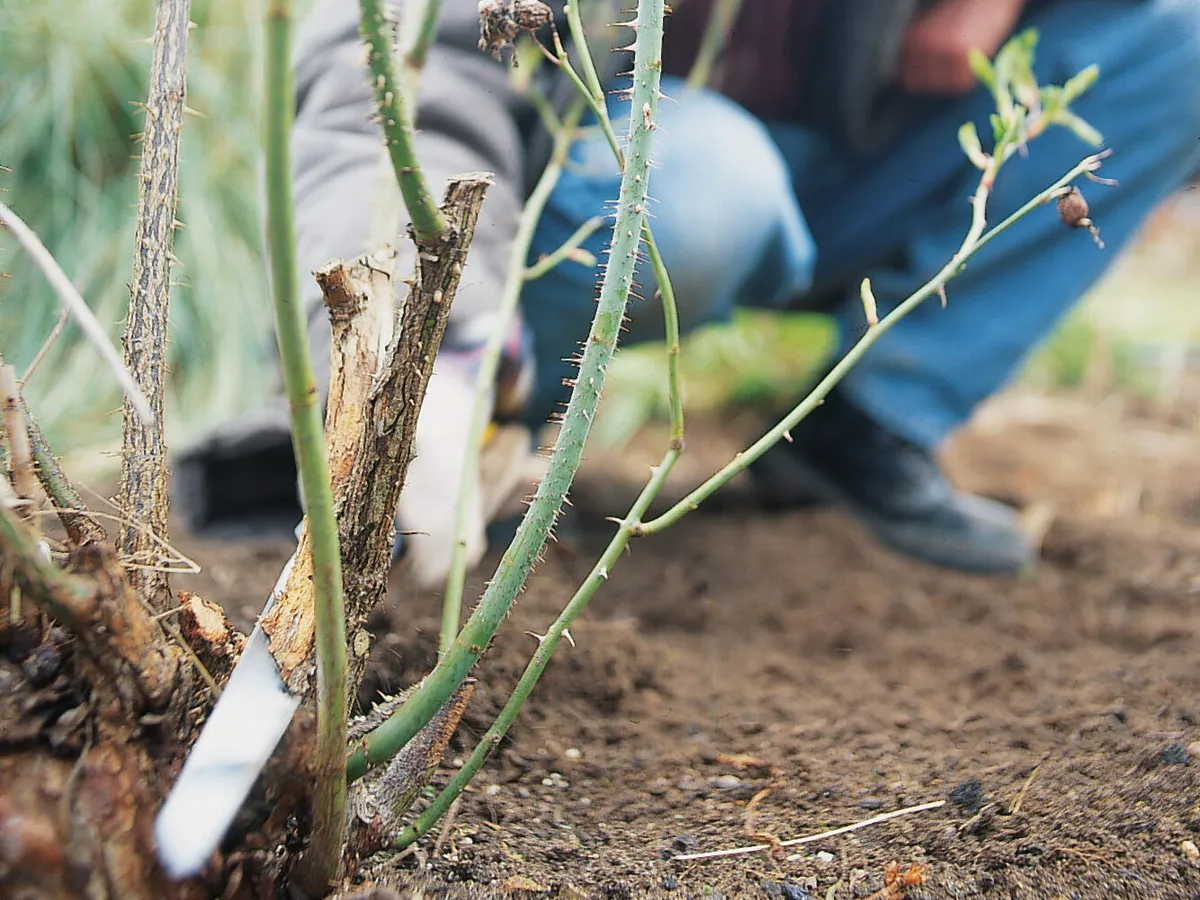
The first task, whatever the type of rose you are pruning, is to take out any dead or diseased rose stems, which should be removed at their base. Damaged or withered stems should be cut back to a healthy green shoot. When you cut through a rose stem it should be clean and white. If it is black, or has a dark centre, cut again further down the stem.
Rose thorns can do a lot of damage, so wear thick gloves. Use sharp secateurs or loppers.
Here's my advice on pruning every type of rose.
How to prune shrub roses
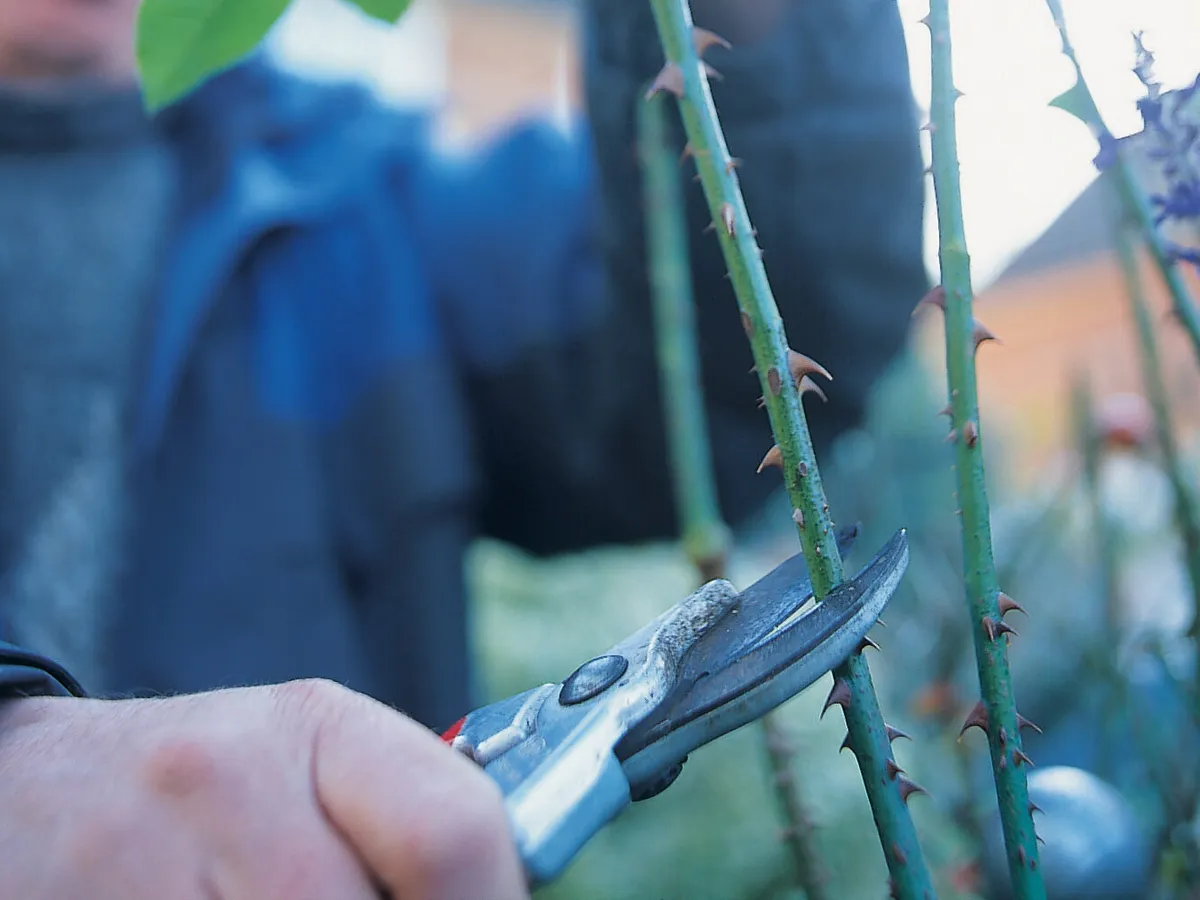
Shrub roses are best pruned in the autumn.
- Cut out old, woody stems at the base of the rose using long-handled loppers. To encourage better flowering, and to reduce the rose's susceptibility to disease, you must create a plant that is open in the middle to allow light and air into the shrub. Cut off stems growing diagonally across the centre of the shrub and those rubbing against each other.
- Next, prune off the top quarter of the rose’s growth. Don’t worry at this stage about where you cut.
- In spring spring, prune the top stems to a new rose bud that is growing away from the centre of the plant. Using sharp secateurs, cut just above the bud at an angle of about 45°, with the blade sloping away from it. Smaller side-shoots should be cut back to two or three buds.
Troy Scott Smith on his techniques for pruning roses at Sissinghurst
Pruning hybrid tea and floribunda roses
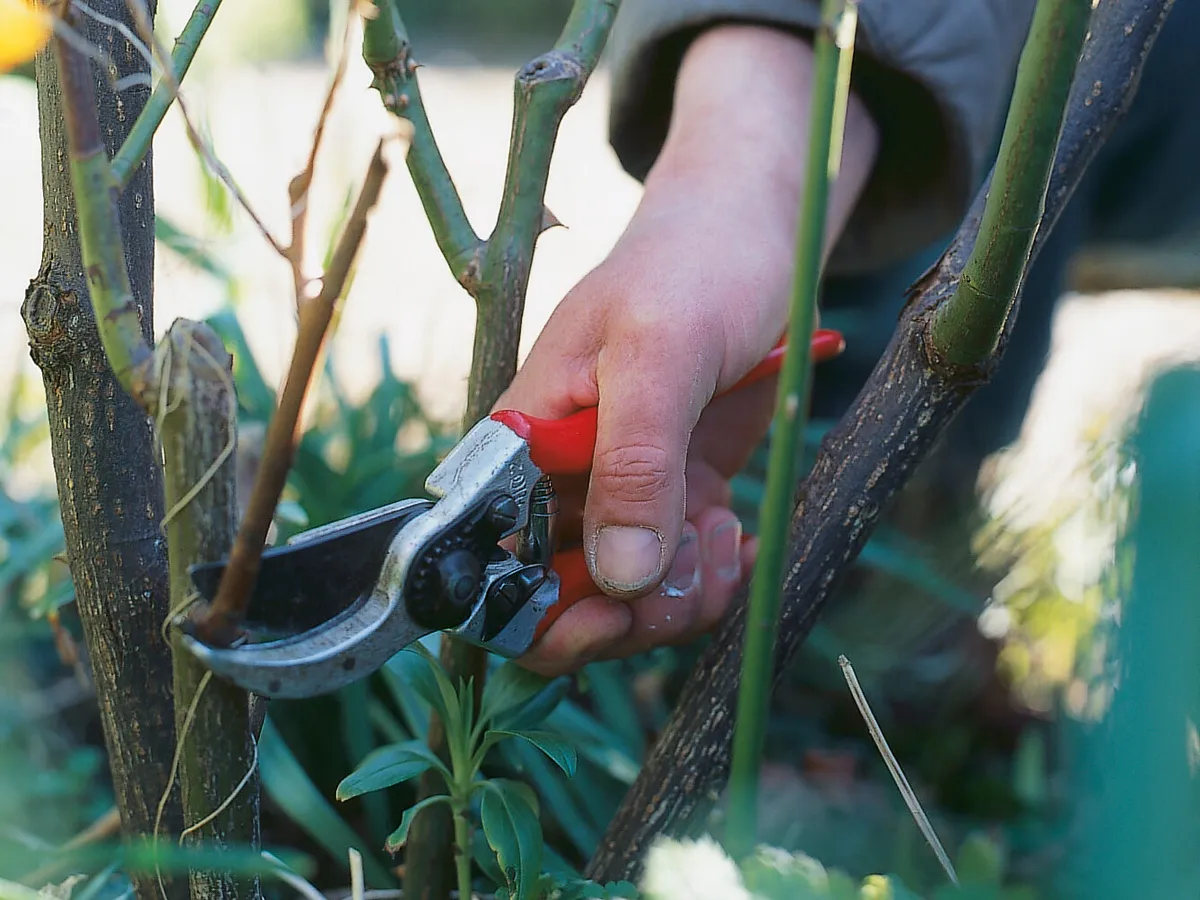
Shorter hybrid tea and floribunda roses need to be pruned back to 45cm high, which means shortening shoots by one third to a half of their length. Again, cut just above an outward-facing bud with a sloping cut.
Thin rose stems (the diameter of a pencil) won’t produce many flowers. Cut back close to the main stem to stimulate stronger growth.
How to prune rambling roses
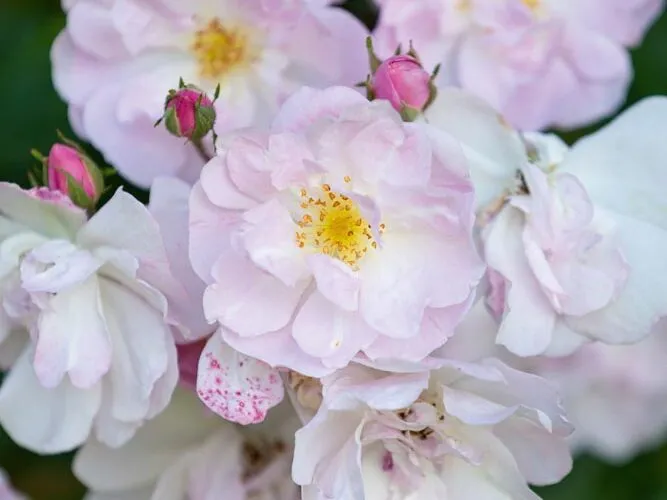
In general, rambling roses produce new stems annually from the ground.
Each autumn, prune about a third of the stems of rambling roses down to a new shoot near the base.
How to prune climbing roses
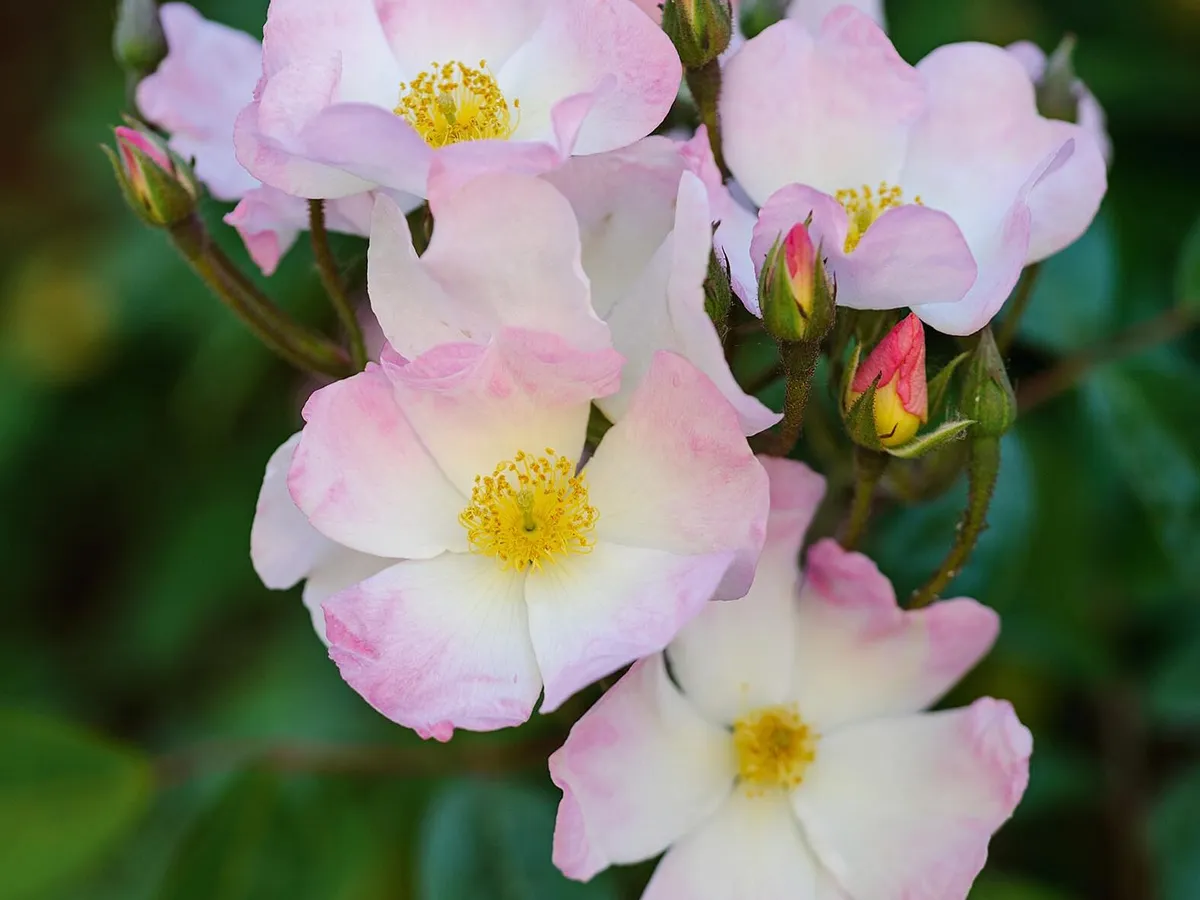
Climbing roses produce new stems from everywhere along their existing ones.
Climbing roses fall into two categories: those that flower once a year (the flowers grow from last year’s stems) and those that repeat flower (the flowers grow from current-year sideshoots).
Once-flowering varieties
Prune one in three of the main stems and then prune the flowered sideshoots on all the stems to two or three buds away from the main framework.
Repeat-flowering varieties
Repeat-flowering rose climbers tend not to be vigorous roses and need little pruning other than deadheading.
It is essential to train the stems of climbing roses horizontally to produce a good display of flowers. Read rose expert Jenny Barnes' advice on how to train climbing roses.
Discover 30 of the best climbing plants.
How to prune miniature or patio roses
Miniature, or ‘patio’, roses are a great option for a pot on the patio and they need very little pruning.
- Remove the dead flowers as they fade.
- Cut out desiccated stems in the autumn and trim the whole plant by about a third in the spring.
Pruning weeping standard roses
Weeping standard roses are produced by grafting a vigorous rambling or climbing rose on to a tall stem.
- During the autumn cut all the stems that have flowered to a new strong shoot near the crown of the plant.
- By the following spring lots of new shoots will be growing at odd angles. Remove these to retain the ‘weeping’ appearance.
Dealing with rose suckers
Most roses are budded or grafted on to the rootstock of a wild rose. Occasionally a rose will produce stems from the rootstock rather than from the grafted plant. These are called suckers and are very vigorous. Left to grow they will dominate the whole rose, leaving you with a wild rose rather than the elegant hybrid you originally planted.
The swelling at the base of the stem at soil level is the place where the rose was grafted. Shoots appearing from below ground or underneath the grafting point are probably suckers. They are usually fatter than grafted stems, covered in more thorns, and have seven leaves rather than the five typical of grafted roses.
To remove them, follow the rose stem down to the point it grows from, clearing away the soil if necessary, and pull it away. If you cut it down rather than pull it off you will only encourage more shoots.
The best pruning tools





